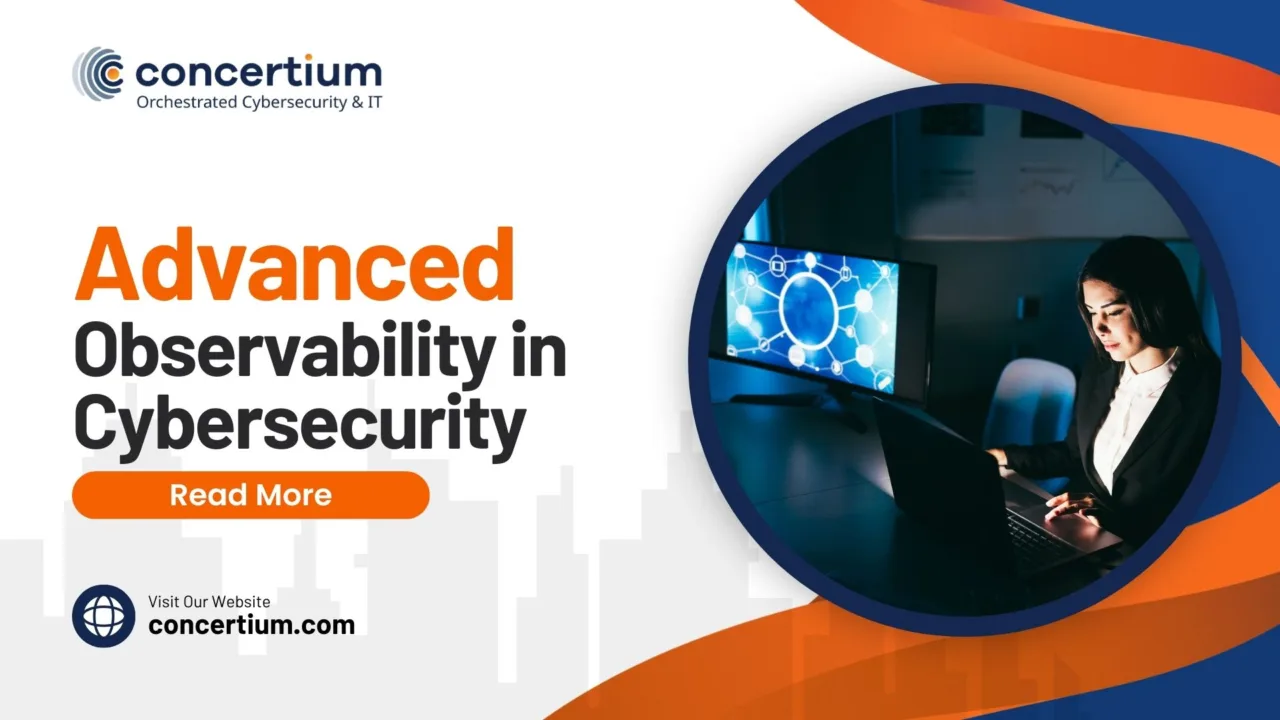Advanced Observability in Cybersecurity
Advanced observability is a crucial aspect of modern cybersecurity. It involves more than just monitoring systems; it provides deep insights into system performance and behavior. But what exactly is advanced observability? Simply put, it refers to the ability to understand the internal state of a system based on the data it produces, such as logs, metrics, and traces. This understanding helps in detecting, diagnosing, and resolving issues faster and more accurately.
In cybersecurity, advanced observability is of paramount importance. It allows organizations to see what is happening inside their systems in real-time. This visibility is essential for identifying potential threats and vulnerabilities before they can be exploited. By leveraging advanced observability tools, cybersecurity teams can ensure a higher level of protection and maintain robust security postures.
Understanding Advanced Observability
The Basics of Observability
Observability is a fundamental concept in system management and cybersecurity. But what is it, exactly? In essence, observability is the practice of measuring a system’s internal states by examining its outputs. This is achieved through three primary components: metrics, logs, and traces.
Metrics are numerical data points that provide information about the performance of different components within the system. For instance, CPU usage and memory consumption are typical metrics monitored in systems.
Logs, on the other hand, are records of events that occur within the system. They provide context and details about specific actions and are invaluable for troubleshooting.
Lastly, traces track the journey of requests as they move through different services and components. Traces are particularly useful in understanding how different parts of a system interact, especially in complex, distributed environments like microservices architectures.
By leveraging these three pillars of observability, organizations can gain comprehensive insights into their systems, which traditional monitoring methods might miss. This holistic view is crucial for maintaining optimal performance and swiftly addressing any issues that arise.
Evolution to Advanced Observability
The journey from traditional monitoring to advanced observability has been driven by significant technological advancements. Traditional monitoring focuses on collecting data from individual system components. However, it often falls short in providing a comprehensive view of the system’s health and performance.
In contrast, advanced observability builds on traditional monitoring by integrating more sophisticated data analysis techniques and tools. This evolution has been propelled by the increasing complexity of modern systems, especially with the rise of distributed systems and microservices. These complex architectures require a more nuanced approach to monitoring and managing performance issues.
Technological advancements such as machine learning and real-time data processing have been pivotal in this shift. For example, advanced observability tools now use AI to analyze large volumes of data quickly and accurately. This allows for real-time monitoring and faster incident response, which is critical in today’s fast-paced digital environment.
The shift to advanced observability represents a move towards a more proactive approach to system management. Instead of reacting to issues after they occur, organizations can now predict and prevent problems before they impact user experience or cause significant disruptions.
The Role of AI in Advanced Observability
Integrating AI with Observability Tools
Integrating AI with observability tools marks a significant leap forward in system management. AI’s capabilities in data analysis are unparalleled. It can process vast amounts of data at speeds that humans cannot match, making it a perfect fit for enhancing real-time monitoring.
For instance, AI can sift through logs, metrics, and traces to identify patterns and anomalies that might indicate potential issues. By doing so, it helps in maintaining system stability and performance. Moreover, AI-driven tools can automatically adjust monitoring parameters based on real-time data, ensuring that the most relevant information is always being analyzed.
This integration not only enhances the accuracy of observability solutions but also reduces the manual effort required by IT teams. Therefore, organizations can achieve more with less, optimizing their resources and improving overall efficiency.
AI-Driven Anomaly Detection
One of the standout benefits of AI in observability is its ability to detect anomalies. Traditional methods of anomaly detection often rely on predefined thresholds, which can lead to a high rate of false positives and missed threats. In contrast, AI uses machine learning models to learn from historical data and identify unusual patterns that deviate from the norm.
This approach significantly improves the accuracy of anomaly detection. AI-driven tools can discern between benign anomalies and genuine threats, reducing the noise and allowing cybersecurity teams to focus on real issues.
For example, AI can detect subtle changes in application performance that might indicate a security breach or a potential system failure. By identifying these issues early, organizations can take proactive measures to address them before they escalate into major problems.
Predictive Analytics and Proactive Measures
Predictive analytics is another powerful application of AI in advanced observability. By analyzing historical data and identifying trends, AI can predict potential threats and performance issues before they occur. This capability allows organizations to implement proactive measures, reducing downtime and improving overall system reliability.
For instance, if AI predicts an increased likelihood of a certain type of attack based on observed trends, cybersecurity teams can strengthen their defenses accordingly. Similarly, predictive analytics can forecast when a system component is likely to fail, allowing for timely maintenance and avoiding unexpected outages.
By leveraging predictive analytics, organizations can move from a reactive to a proactive approach in managing their systems. This shift not only enhances security and performance but also leads to significant cost savings by preventing incidents before they happen.
In addition, the ability to predict and prevent issues improves the overall user experience, ensuring that applications run smoothly and efficiently. Therefore, integrating AI into observability solutions is a strategic move that offers numerous benefits and positions organizations for long-term success.
Benefits of AI-Powered Advanced Observability
Enhanced Threat Detection
Enhanced threat detection is one of the most significant advantages of AI-powered advanced observability. AI algorithms can process vast amounts of observability data at lightning speed, identifying potential threats much faster than traditional methods. This rapid detection is crucial in today’s cybersecurity landscape, where threats evolve constantly.
For instance, AI can analyze application performance monitoring data to spot anomalies that indicate a security breach. These tools don’t just look for known threats but can also detect new, unknown vulnerabilities. This capability significantly reduces the time to detect and respond to threats, making your security posture more robust.
Moreover, AI helps in reducing false positives. Traditional monitoring tools often flood security teams with alerts, many of which are false alarms. AI, however, can differentiate between genuine threats and benign anomalies, filtering out the noise. This precision allows teams to focus on real issues, enhancing efficiency and effectiveness. According to AI in Cybersecurity, this approach leads to a more secure and manageable environment.
Improved Incident Response
Improved incident response is another critical benefit of AI-powered advanced observability. AI-driven tools can automate many aspects of the response process, allowing for faster and more accurate resolutions. For example, AI can trigger automated scripts to isolate affected systems or block malicious IP addresses as soon as a threat is detected.
This automation significantly reduces response times. In cybersecurity, every second counts. Faster response times mean that potential damage can be minimized or even prevented altogether. Automated responses also free up security teams to focus on more complex tasks that require human expertise.
In addition, AI provides valuable insights during and after incidents. By analyzing observability metrics, AI can help teams understand the root cause of issues, ensuring that similar incidents can be prevented in the future. This proactive approach leads to continuous improvement in incident response strategies.
Cost Efficiency and Resource Optimization
Cost efficiency and resource optimization are significant benefits of adopting AI-powered advanced observability. Traditional monitoring tools often require substantial human resources for managing and analyzing data. AI, however, automates these tasks, leading to lower operational costs. By automating routine tasks, organizations can allocate their resources more effectively.
For instance, AI can handle continuous monitoring and data analysis, tasks that would otherwise require a dedicated team. This automation not only reduces labor costs but also minimizes the risk of human error. Moreover, AI-driven tools can scale more efficiently, adapting to the needs of growing systems without a proportional increase in costs.
Efficient use of cybersecurity resources also means better performance management. AI helps in identifying and addressing performance issues before they escalate into significant problems. This proactive approach reduces downtime and improves overall system reliability. By optimizing resources, organizations can achieve better outcomes with less investment, making AI-powered observability a cost-effective solution.
Implementing Observability
Choosing the Right Tools
Choosing the right observability tools is crucial for successful implementation of AI in advanced observability. Key features to look for include real-time data processing, machine learning capabilities, and seamless integration with existing systems. Tools that offer comprehensive end-to-end observability provide the best value.
Comparison of popular tools can help in making an informed decision. For instance, some tools excel in cloud environments, while others are better suited for on-premises infrastructure. It’s important to consider the specific needs of your organization and choose tools that align with your goals.
Moreover, evaluating user feedback and case studies can provide insights into the effectiveness of different tools. Selecting the right tool is the first step towards achieving a robust and efficient observability strategy.
Integration Best Practices
Integrating AI into your observability platform requires careful planning and execution. Here are some best practices to ensure seamless integration:
- Start Small: Begin with a pilot project to test the integration process and identify potential issues.
- Ensure Compatibility: Verify that the new tools are compatible with your existing systems and infrastructure.
- Focus on Data Quality: High-quality data is crucial for effective AI analysis. Ensure that your data is accurate, complete, and up-to-date.
- Training and Support: Provide adequate training for your team to ensure they can effectively use the new tools.
Common challenges include data privacy concerns and managing the complexity of AI models. Addressing these challenges early on can lead to a smoother integration process.
Challenges of Observability and Considerations
Data Privacy and Security
Ensuring data privacy and security is a significant challenge when implementing AI in advanced observability. AI systems require access to large amounts of data, which can include sensitive information. Therefore, it is crucial to implement strong data protection measures.
Compliance with regulations such as GDPR and CCPA is essential. Organizations must ensure that their data handling practices meet these regulatory requirements to avoid legal repercussions. Additionally, encryption and access controls can help protect sensitive data from unauthorized access.
Moreover, it is important to regularly audit and update security measures to address new threats and vulnerabilities. By prioritizing data privacy and security, organizations can confidently leverage AI for advanced observability without compromising sensitive information.
Managing Complexity
Managing complexity is another key consideration when implementing AI in advanced observability. AI models can be complex and require specialized knowledge to develop and maintain. Therefore, it is essential to have a skilled team in place to manage these models effectively.
Maintaining the observability infrastructure is also crucial. This includes ensuring that the underlying systems and tools are properly configured and regularly updated. Regular monitoring and maintenance can help prevent performance issues and ensure the smooth operation of AI-driven observability solutions.
Additionally, adopting a modular approach can help manage complexity. By breaking down the system into smaller, manageable components, organizations can more easily identify and address issues. This approach also allows for greater flexibility and scalability, making it easier to adapt to changing needs and requirements.
What People May Also Ask
What is Advanced Observability in cybersecurity?
Advanced observability involves using sophisticated tools and techniques to gain deep insights into system performance and behavior. It goes beyond traditional monitoring by integrating metrics, logs, and traces to provide a comprehensive view of the system.
How does AI enhance observability tools?
AI enhances observability tools by automating data analysis, improving anomaly detection, and providing predictive insights. This leads to faster and more accurate identification of issues, allowing for proactive measures to be taken.
What are the key benefits of AI-driven advanced observability?
The key benefits include enhanced threat detection, improved incident response, and cost efficiency. AI-driven tools can detect threats faster, reduce false positives, and optimize resource usage, leading to better security and performance.
What challenges might organizations face when implementing AI in observability?
Challenges include ensuring data privacy, managing the complexity of AI models, and maintaining the observability infrastructure. Organizations need to address these challenges to fully leverage the benefits of AI in observability.
How can businesses ensure data privacy while using AI in observability?
Businesses can ensure data privacy by implementing strong data protection measures, complying with relevant regulations, and using secure AI models that do not compromise sensitive information.
Conclusion
AI is revolutionizing advanced observability in cybersecurity, offering significant advantages in threat detection, incident response, and cost efficiency. By integrating AI with observability tools, organizations can achieve a more proactive and efficient security posture.
As technology continues to evolve, the role of AI in observability will only become more critical. Therefore, staying ahead of trends and adopting best practices will be essential for maintaining robust security in the future.





